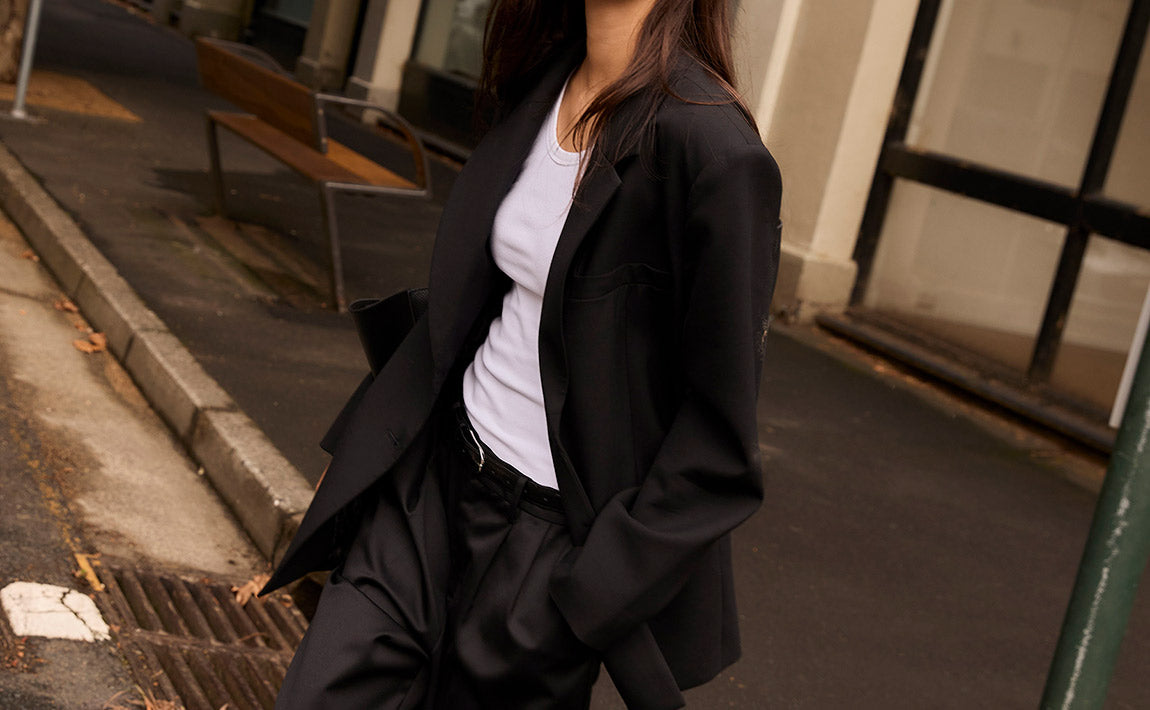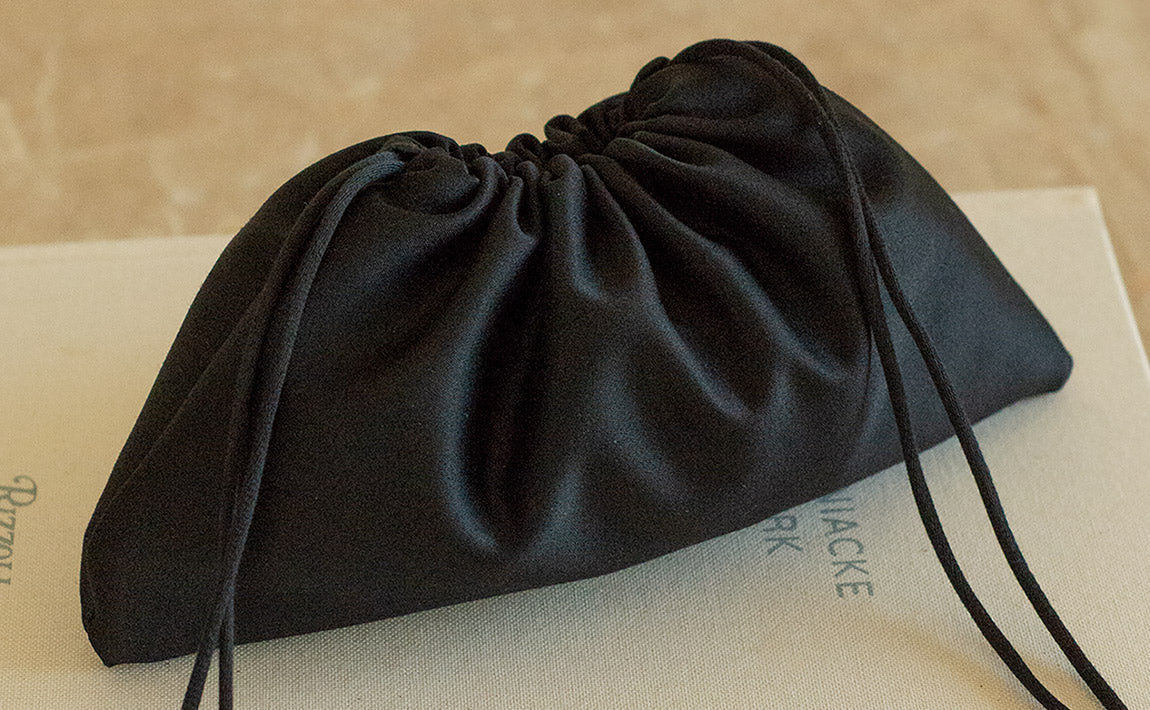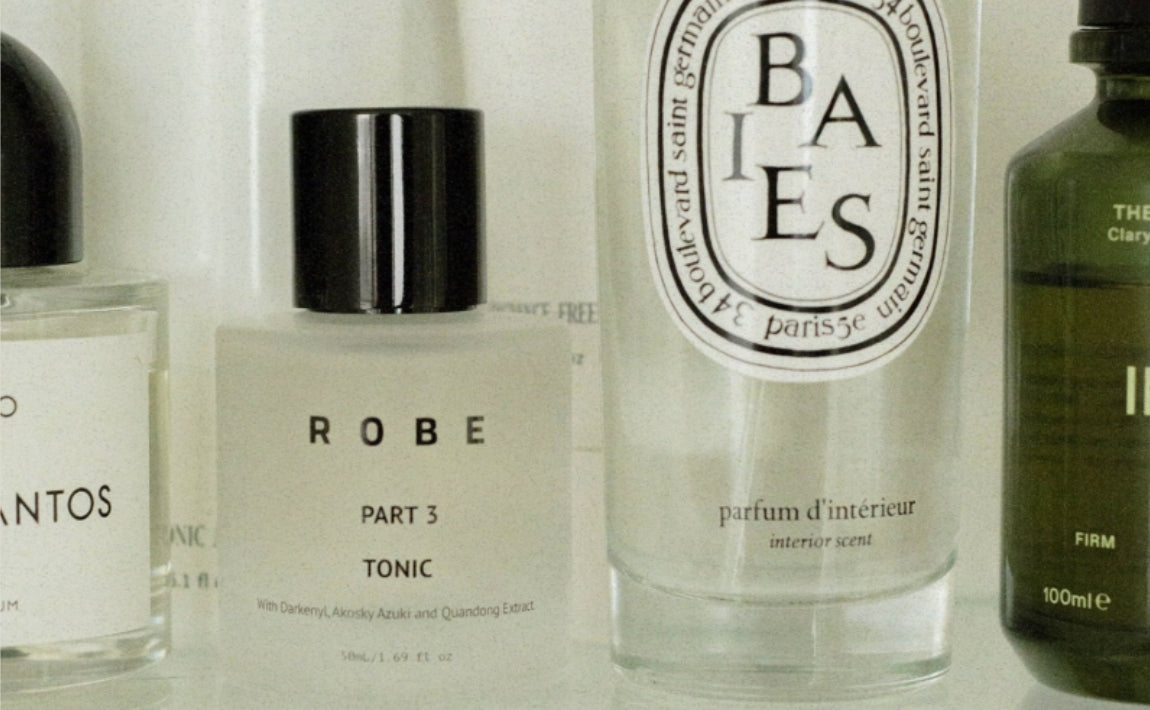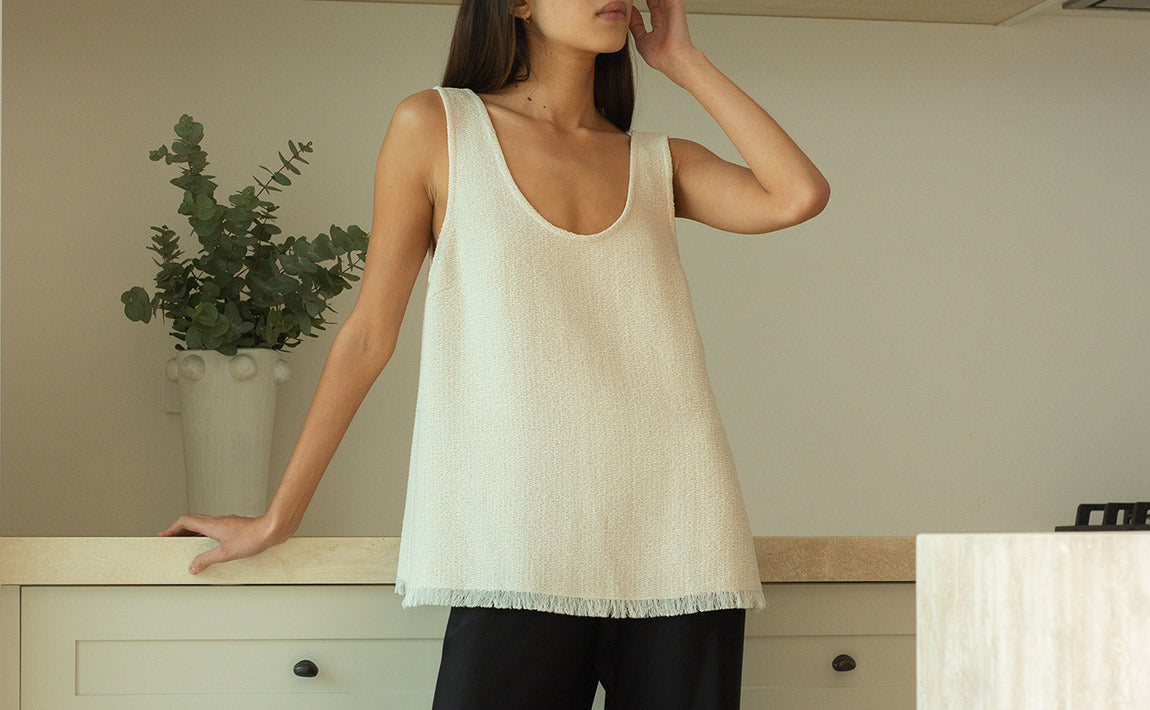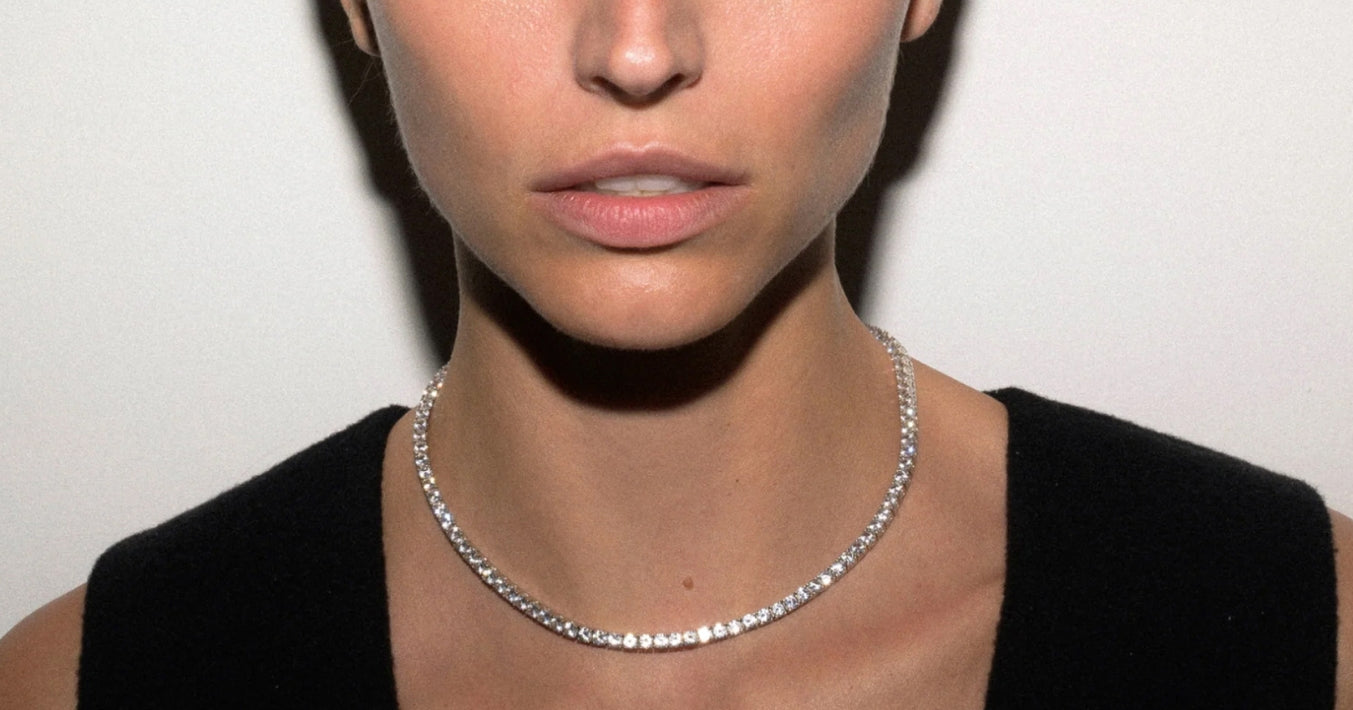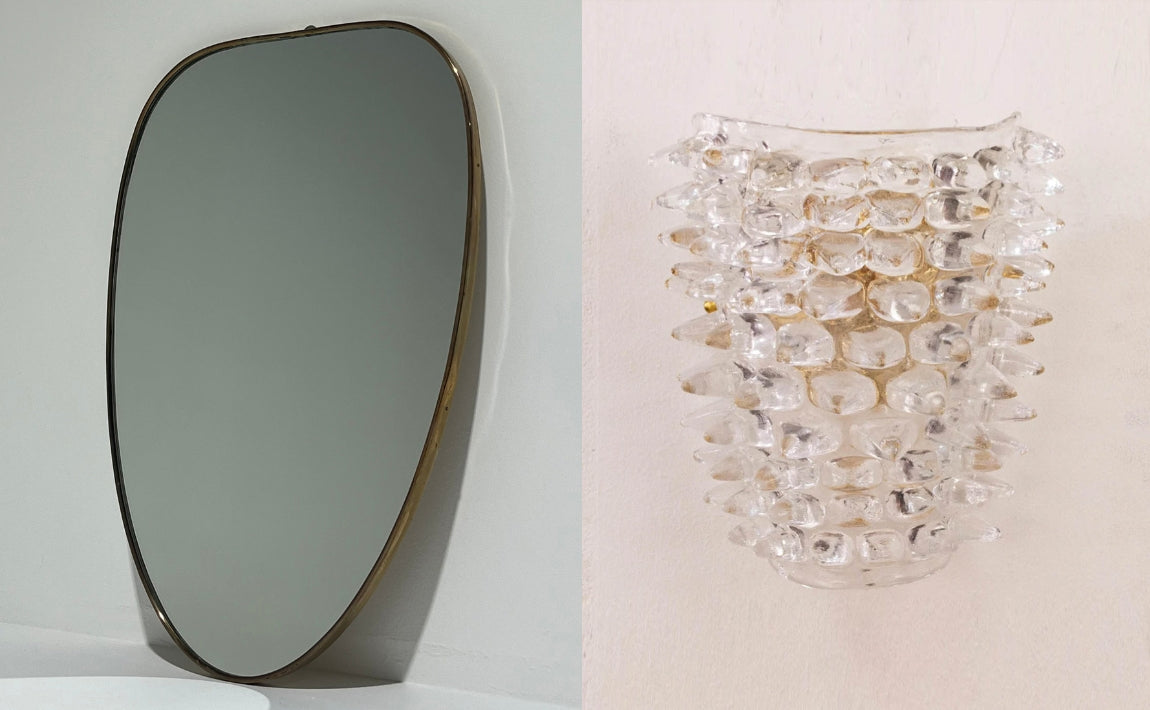The Future of Australian Fashion Week

For some time now, it’s been heralded that fashion week isn’t what it used to be. In fact, a number of somewhat censorious fashion critics consider it a broken system, claiming that it has lost its purpose, its allure lessening — harsh? Perhaps. But fashion week has clearly shifted its form over the decades, the metamorphosing quickening in recent years.
Overseas, editors have critically skewered the event, singling out New York Fashion Week in particular as an event that’s losing its “salience, verve and cultural relevance” as the schedule thins and emerging and established design houses either move completely off schedule or are decamping to London and Paris.
This criticism can likely be pinned in part on the fact that the ever-sought viral moment has become king. Particularly post-Covid, as the fashion industry has scaled up and revenue targets shoot sky high, the key to increased revenue and greater visibility seems to be in creating the most ‘Instagrammable’ moment, the next cult-favourite item, and a celebrity-filled front row that goes on to be relentlessly photographed and broadcasted across the globe.
Locally, Australian Fashion Week (AFW) too has changed drastically. Arguably, the two most obvious distinctions between the AFW of the past and the event today are its format and location. The backdrop of the iconic Sydney Harbour from the Overseas Passenger Terminal, was traded for inner city train tracks of Carriageworks in 2013, a decision that might have cost the international tourism appeal of global editors, photographers and tastemakers, pushing brands to seek off-site locations in the hope to generate a memorable experience that is hard, and expensive, to do within 4 walls of an industrial building.
Secondly, the format and adaptation of the see-now-buy-now (SNBN) model that gained international traction in 2016 has become a key pillar in the current AFW format. Amalgamating the traditional industry only event with a fashion festival consumer offering, a selection of the shows once reserved only for editors, media and buyers has become ticketed, with VIP customers either being gifted an experiential seat at the show, or any devotee of the brand can purchase their seat. Brands are then showing a mix of products available to purchase now, alongside the traditional Resort preview. But with SNBN more recently being relinquished by international designers that originally took up the model during their respective fashion weeks, it poses the question, is this the right format for AFW?

“Fashion week used to be more of a trade show and very industry only… I liken it to a big conference almost where you can see lots of people who work in the space all at the same time, and, of course, seeing all the clothes all at once!” explains Zara Wong, whose experience of fashion week over the years has been lensed through two different contexts; as a fashion editor, and eventually, director at titles include Vogue and Harper’s BAZAAR Australia, and more recently as a brand consultant. Fashion was once about more than the ‘wow’ moment, one which would see thousands of posts broadcasting it in its wake. Instead, as Zara puts it, it was just as much about the moments in between shows: “rather than the formal shows, it’s all about the in-between moments — meeting new designers, seeing the vision of a brand on a runway that just wouldn't have translated so well as images on the internet.”
Across the globe, a handful of brands are trying to recreate the magic of the past. Famously, The Row asked the guests of its recent Autumn/Winter ’24/’25 presentation in Paris to refrain from capturing or sharing any content during [their] experience,” replacing their phones with Japanese notepads and a pen so they could instead take handwritten notes. But as the adage goes, “You can never go home again.” In this changed world, such a request was viewed by many as elitist given the guest list for such a show is minimal and interest in the label’s latest wears reaches fever pitch each season.
However, The Row’s move could be seen as a protective one — given collections typically debut at least six months before their release to the public, the design house may simply have been trying to be deliberate about the purpose of their show and who exactly gets to see their collection first. A clear resource for contemporary as well as fast fashion brands, slowing down the broadcasting of their collection limits the chance of copycats beating The Row to the shop floor with alarmingly similar designs.
So, who is fashion week — and more specifically Australian Fashion Week — for today? For many, it’s unclear.

While gatekeeping isn’t something most in the industry strive for, it does confuse a show and brand’s purpose when it’s trying to be everything to everyone, and in the process, alienating many. “I do think the Australian Fashion Week today currently faces a bit of an identity challenge, serving both industry professionals and consumers, and a wider range of brands — a strategy that dilutes its overall impact and message,” states Fashion and Retail Strategist, Lisa Ruffle, when asked about her view of where Australian Fashion Week stands today.
And as formats change, so too does the slate of designers on the schedule. As notable Australian designers continue to migrate overseas, the blockbuster names that would once draw international eyes to our own shores have their own sights set on the ‘big four’ fashion weeks, drawing a great deal of attention away from Australia as a global fashion player.
As succinctly put by Nicky Zimmermann — co-founder of the eponymous brand which has presented at Paris Fashion Week for the past two years — “It’s a great strength of AFW that it has been a launching pad for so many great Aussie designers to pursue opportunities overseas.” This comment (while intentional, or not) seemingly suggests that it’s a natural progression for local talent to depart the Australian Fashion Week schedule rather than remaining on it, as many heritage designers across the globe remain in their founding cities. Equally successful Australian design houses including Christopher Esber and Dion Lee have followed suit, making their respective debuts at Paris and New York Fashion Week in recent years.
Of course, the graduation of designers from the Australian Fashion Week schedule does allow for the intake of emerging names. Esse, Wynn Hamlyn, and Beare Park are among the labels that have made their AFW debuts in recent years, each having the chance to communicate their distinct visions and make a real mark on the local industry.
For Matteau, participating in Australian Fashion Week in a period of growth was pivotal, the brand taking part in AFW in 2019, 2020 (which was eventually cancelled due to the pandemic) and again in 2022. “When our ready-to-wear collection was in its early years, being a part of (the then-Mercedes Benz-sponsored) Fashion Week helped to firm up our brand positioning from swimwear only, to a full womenswear offering,” shares Matteau’s Co-Founder and Director, Peta Heinsen. Even in 2022, AFW held power for Matteau as a channel to support its reemergence from the pandemic — “it really felt like it was time to ramp things up again after the experience of the two years prior.” The label has since exited the AFW schedule, flagging a change in brand strategy as well as one big, unmoving concern plaguing many emerging designers that get to a place where presenting their collection at fashion week is the next logical step: cost.

Not only are designers having to account for the expenses that come with physically creating a collection, staging a show also means having a sizable budget for production — that isn’t even accounting for the fees designers must pay just to appear on the Australian Fashion Week schedule. For many emerging labels, dedicating funds to staging a single, 10-minute show isn’t always the most sound financial decision. “Designers need to understand that presenting a runway show is a huge investment — both from a monetary and time perspective,” points out Robyn Catinella — Founder and Director of the communications and wholesale agency, CATINELLA — adding that participating in AFW doesn’t always pay dividends. It’s important to note however that for Australian Fashion Week 2024, designer participation fees were waived, as they have been before in recent years.
It’s also been reported that presenting on the official schedule (owned and run in Australian by IMG) comes with guidelines that heavily influence a show’s location, how it’s formatted, models cast and the volume of pieces to be presented, these directives each holding the potential to compromise a collection’s intended message: “I would only encourage my brands to participate if they are willing to be pragmatic, while simultaneously devoted to their creative vision.” Catinella explains. “Fashion Week is full of last minute developments, which requires a level of unparalleled adaptability. However, this cannot come at the expense of the brand’s vision and original concept. If this is compromised, the presentation will inevitably lack the desired results." Catinella too warns of the dangers of convoluted messaging, the worst results of which being low commercial performance and no media coverage.
As Wong plainly puts it, whether or not a designer stages a show now “depends on what [they] want to achieve, where, and why… Often, if not done for ‘the right reasons’, there are many instances where brands could perhaps do without a show, but again, it comes down to them really working out what they want from it.”
The above constrictions have led many to do exactly what Wong suggests: forfeiting a show at AFW and presenting their collections through alternate avenues, be it an intimate dinner, showroom appointments or off-site activations. It’s certainly the way Heisen sees fellow designers going: “I think we will continue to see a shift in local fashion brands choosing to activate off-schedule. I think this is far more exciting for the consumer to see, as it allows the brand to really represent themselves authentically, and in a way that works for them.”
Ruffle for one wants to see more designers adopt this approach as what she sees as a far more effective alternative to the traditional runway show: “I have personally loved the recent shift to more intimate events that give brands and designers the opportunity to host their best customers, press and buyers in a way that feels more true to them.”

Harris Tapper — a New Zealand born label founded by Director, Sarah Harris Gould and Creative Director, Lauren Tapper — is one such label that has executed this hybrid presentation model ultra successfully.
While they had technically presented during AFW, the designers decided to forgo the traditional runway show at Carriageworks for an intimate evening that rang true to what Harris Tapper is as a brand and engaged it’s community in a beautifully authentic way — by having them debut their latest collection: “Our clothes are quiet with interesting proportions and details — think raw, fraying hems on bonded satin and stiff structured suits — so having real people wear the clothes does really show these details along with the nuances that each garment has,” explains Harris Gould
To her and Tapper, there are definitely some shortfalls to the traditional runway format: “These [details] might be missed in the fast pace of a show, Tapper says, also pointing out that “models are paid to wear the clothes in a presentation, they don’t get to choose what they’re wearing.
By leaning on the community of fellow creatives they’ve curated, Harris Gould believes that they can get a better read on a collection, and how it’s worn, rather than presenting a static collection to a passive audience: “By dressing friends, they’re getting to pick what they want so are naturally more at ease in outfits and that confidence definitely shows through in the images. It’s also a great way to gauge reaction to products, if everyone’s picking the same piece it’s usually an early indication of what the wider Harris Tapper women might lean toward.”

While AFW is still seemingly finding its feet within this new normal, other fashion weeks are standing strong — a relatively young event established in 2006, Copenhagen Fashion Week (CPHFW) has skyrocketed in popularity to become not only the biggest fashion event across Scandinavia but even informally acknowledged as the “fifth” fashion week following New York, London, Milan and Paris. So, what is behind the success of a relatively comparable fashion week to Australia’s that is a decade younger, yet has surpassed it on the fronts of publicity, public interests and even the prospering of its local labels?
It comes down to two things: a strong and singular focus on sustainability — brands must now adhere to 18 different sustainability requirements at a minimum in order to show — and significant financial support of local talents through its own NewTalent scheme. Under the direction of Copenhagen Fashion Week’s governing body which shares the same name as the event, and its revolutionary CEO Cecilie Thorsmark, fashion week as it has come to be has been majorly disrupted.
As fashion and retail strategist, Lisa Ruffle, explains, Copenhagen Fashion Week’s hyper-targeted approach has seen it become an extremely buzzy week, one that offers a “clearer narrative and more focused media coverage”. “Australian Fashion Week has struggled somewhat in comparison to events like Copenhagen Fashion Week, especially more recently, because of its dual focus on both industry insiders and consumers,” Ruffle adds. “The dual focus can make it less targeted to market and more confusing for those following the week.”
Rather than its ethical hardline and next-gen focus alienating its more established talents, CPHFW has seen Scandinavia’s biggest exports keep their feet firmly planted on home soil. The internationally-renowned likes of Ganni and ROTATE Birger Christensen as well as Stine Goya and Saks Potts keep eyes firmly planted on Copenhagen Fashion Week. “I think it’s fair to say that geographical isolation and a smaller local market does have an impact on our global presence, but I think our lack of coverage is also greatly impacted by the fact that we don’t have enough established designers presenting during the week (on schedule or off),” explains Ruffle.

How does Australian Fashion Week replicate the success of Copenhagen Fashion Week while still retaining its distinction within the global fashion community?
Firstly, in Ruffle’s view, the format of AFW needs to be strategically refined, re-separating the industry from the consumer-facing as once was the order: “We need to better delineate between events for industry professionals and those for consumers to sharpen our focus and impact… Top spending customers should absolutely be front and centre of a brand’s Fashion Week show, but there is ample opportunity to focus on larger consumer events in-season, when the stock is hitting the shop floor and the impact is more rewarding.”
Secondly, Ruffle also suggests the increased involvement of a local organisation in the event itself to refresh, and redefine, what the event could be: “We need to have a stronger governing board through the Australian Fashion Council (like the CFDA), that nurtures our home-grown talent and dictates and ensures the calendar is of an international industry standard.”
Whether spearheaded by said organisation or not, there also needs to be greater financial support for local emerging designers to not only stage shows, but grow their brands so that they can too prosper outside of AFW — yes, the Next Gen prize currently on offer does offer financial support to four designers to stage shows at fashion week, however most brands are relying on sponsorship to support their shows, according to Marie-Claude Mallat, Founder and Director of MCMPR. Modelling what could be possible, CPHFW’s NewTalent program assists designers across a three season period, as well as offering mentoring and additional resourcing to keep Denmark’s fashion industry thriving.
“I’m an advocate for pulling the focus back to supporting and mentoring local industry, and emerging designers,” proclaims Mallat. “I’d love to see the Australian industry establish richer programs for commercial support for emerging designers, similar to what has been done with the British Fashion Council awards.”

And thirdly, it’s the view of many that the local industry would greatly benefit from establishing an overarching vision for what Australian fashion is 2024 and beyond, and what makes it stand apart from major fashion nations globally. In Mallet’s opinion, it’s resort wear that Australians do best: “Australia sits in a league of its own with resort wear — we’ve got an effortless and wearable approach to design that is in touch with nature, both from an aesthetic and sustainably considerate point of view due to our outdoor way of living.”
A great authority on resort wear, Matteau’s Heinsen naturally agrees that the category is one the Australian market can truly own: “Beach culture, and our lifestyle in general, very much directs what we want to wear and how we wear it. Australians know better than most how to spend a day by the water and can go from beach to bar without fuss.”
But Heisen also knows that our collective strengths go further — the truth is that we truly embody the Australian lifestyle in what we wear; our dressing is laid-back but still very much intentional and purpose-led, what she coins “weekend casual style”. “Nothing too complicated, nothing too overt and in wearable, beautiful fabrics”
And it’s not just us appreciating this approach to dressing: “The appeal of elevated, yet easy-to-wear silhouettes is not just something Australian women desire, but women globally are recognising what Australian fashion offers them in their approach to dressing,” adds Heinsen, a global appeal that Ruffle herself confirms as a former buying director for the New York-hailing Moda Operandi. Citing the oft-referenced Christopher Esber and Zimmermann as two of the brands that have reinstated the authority of our local fashion industry in overseas markets, she reassures that the “general attitude towards Australian fashion overseas is positive” and that there’s a “growing appreciation for our relaxed and distinctive approach to ready-to-wear”.
“Australian fashion aspires to be known for its effortless elegance, environmental consciousness, and a unique fusion of high fashion and practicality,” Ruffle reaffirms. “There is a common theme among our designers — a deep respect for the natural environment and a relaxed yet fashionable, more minimalist aesthetic.”
And overarching it all is the spotlight Australian Fashion Week shines on First Nations creatives — since 2021, labels including Liandra and Ngali have staged their own on schedule, and showcases dedicated to Indigenous designers including the First Nations Fashion + Design show, and most recently, the David Jones Indigenous Fashion Projects Runway, have offers designs from the likes of GALI Swimwear, Ihraa Swim, JOSEPH & JAMES and Miimi & Jiinda to the world’s eyes.

So, does Australian Fashion Week still hold purpose within our local fashion industry and beyond? Despite the suggested structural shifts that flood this piece, the resounding answer is still yes.
Pointing out one glaringly obvious benefit that AFW still holds, Catinella notes the rare concentration of local media attention staging a fashion show still brings to this day: “it would be ignorant to state the publicity power of AFW has waned. She goes on: “within Australia, a large-scale gathering of competing titles and editors only occurs once a year. As a result, AFW offers a significant opportunity to engage with a comprehensive, industry-wide audience, which centralises the attention of all key media figures in one place.”
It’s a point Zara Wong seconds: The benefits of fashion week for a brand is that the audience — whether it be consumers, retailers, media, and even general interest audience — are geared and prepped for the period so there’s a lot of attention in that week.
Though both Wong and Marie-Claude Mallat both agree that there’s a lot of noise to cut through when it comes to AFW, and that there are now so many ways to bring a collection to life other than staging a runway — “it’s not enough for designers to rest on tried-and-true approaches anymore. The current state of play requires designers to continually push the boundaries of what is expected to make an impact,” adds Mallat — Ruffle points out that presenting at AFW is a key step in the ecosystem of a collection and the wider brand.
“Think of it like a flywheel effect,” she explains. “When brands create positive buzz and spark natural conversations on social media, it often translates into more sales and traffic. So, even though the traditional fashion week format might not work for everyone, its role in boosting brand visibility and engagement is still so important.”
For brands on the precipice of international success, presenting at Australian Fashion Week can still serve as a conduit to global retailers and mean an eventual lessening reliance for grand-scale presentations: “If a new brand is looking to onboard wholesale partners then participating on-schedule is a great way to get in front of some of the world’s best retailers,” Heisen encourages. “We’re fortunate to have built great relationships with our wholesale partners over the years, and with this comes the freedom to set our own calendar and marketing initiatives.”
Exposure to not only global retailers, but also extremely influential worldwide media outlets like Vogue Runway, while still being able to present on home soil is one other plus Catinella points out: “Publications like Vogue Runway have travelled for the AFW in recent years, offering local talent the unique opportunity to present their vision on the global stage, without having to incur the costs of producing a show or going to market overseas,” she proffers, adding: “this is particularly significant for new guard designers, who can inaugurate their creative vision to travelling editors, as well as established industry players, who have the opportunity to reinforce their status in a local context.”
This rings just as true for overseas designers descending on Australia for the global stage that it is: “We see Australian Fashion Week as the birthplace of some incredible global businesses, it has a strong legacy,” says Tapper.

Just a few steps away from the runway, fashion week reveals a secondary, but equally powerful, force at play. As we’ve come to realise, fashion weeks across the globe have fostered a subculture through the prevalence of street style taking place outside the shows.
The business of street style has become a key marketing tool for those presenting on schedule and those that aren’t, but are attuned to its commercial power. Dressing editors, influencers, and street style stars has become big business. With key media outlets all producing their ‘Best of Street Style’ looks, if executed right (more on that soon), brands can achieve the goal of eyes on their shoppable designs in a See-Now-Buy-Now format.
As Eleanor Pendleton, Founder and Creative Director of Gritty Productions and an Australian street style favourite puts it “Like any person tuning in to watch AFW from their screen, I too am inspired by the street style that is captured by showgoers, and my mental shopping list certainly gets longer as the week goes on.”
The magic of good fashion week street style? Authenticity. With the growth of the commercialisation of street style, comes the head to toe designer looks that fail to conjure the same feeling of tapping into your favourite editor or influencers personal style. What good street style provides, which parallels the strategy that Harris Tapper taps into, is that we see real clothes, styled in a real way with bonus points if there is a link to buy.
—
What all these key voices within the Australian fashion industry echo is that in order for the week to succeed in its purpose of being a key avenue to showcase and support local talent, then strategic changes need to be made. If the goal is to raise up Australian designers so they can spread their wings in the pursuit of international success, we need to first ensure solid local foundations are laid, as without commercially prosperous and internationally-recognised Australian designers, the rest of the industry, unfortunately, will feel its impact and the salience of the event will continue to cease.

